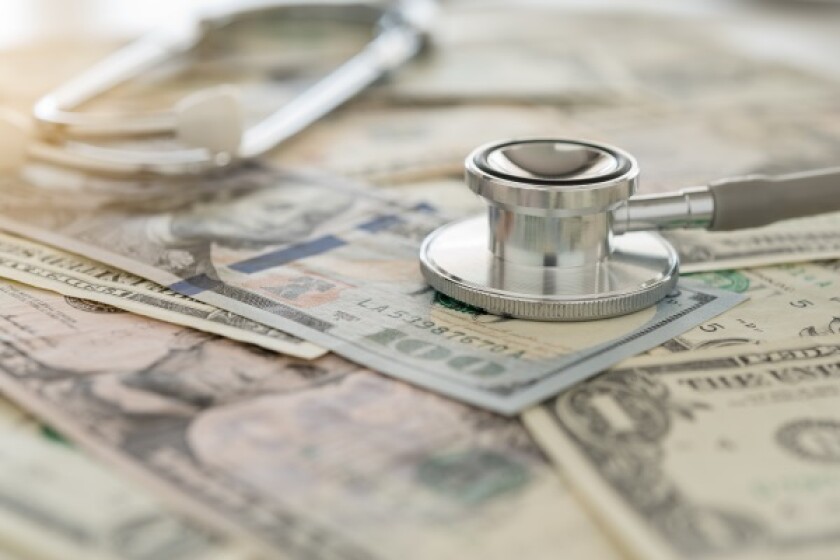Sources from top innovator pharmaceutical companies say the patent system is not to blame for rising drug costs and that any attempt by politicians to dismantle the system will only lead to the development of fewer medicines.
Attacks on the patent system have escalated in recent years, including in the US with the introduction of new legislation in Congress to change medical eligibility standards and alter the time of patent protection. Last February, Senator Ron Wyden of Oregon accused an AbbVie executive of protecting patents like “Gollum protects his ring”.
And evidence suggests that drug prices are becoming increasingly unaffordable. A recent study from Yale University says one out of four patients with diabetes report rationing their insulin because of cost, and blockbuster drugs like Humira have tripled in list price over the last decade.
With a recent poll showing that Americans consider health care to be their second priority in this year’s presidential election, politicians are scrambling to find a scapegoat for escalating health costs.
The assistant for a pharma innovator company in the UK admits that while there is justifiable concern for the sustainability of drug prices, going after patents is not going to help.
“Everyone recognises the enormous challenges that are faced by governments as technology develops and we get more complex and personalised medicines. But where the industry defers from others is that we do not see the IP system as the barrier of access,” she says.
“You need creative thinking and new solutions in the realms of how medicines are paid for and on what basis, and we need new creative schemes for paying for medicines.”
The VP for corporate a European pharma innovator adds that the patent incentive is one of the most fundamental parts of the pharmaceutical industry. He tells Patent Strategy that early publication of an invention with a patent leads to more competition in the field because drug companies race to develop the newest technologies.
He explains: “You should consider the patent system like an ecosystem between innovators and generics. If you want treatments for diseases, you need the stability of the patent system to provide incentives because it is very risky to do our research.
“Without an effective patent system, we would not have many drugs available today and we would certainly not have 7,000 drugs currently in development worldwide. I can easily say the patent system in my company is not keeping medicine away from sick people. I know, for example, that most insulin is off patent.”
One reason prices are very high for some therapies is because the technology is relatively new. Personalised medicines such as CAR-T cell therapies can cost almost half a million dollars per patient. But according to the chief patent counsel for a US biotech company, behind the high costs are not the patents, but the enormous investment pharmaceutical companies need to develop the therapies.
“It is so expensive to do the clinical trials, and more expensive for the cell therapies because these patients are in the intensive care unit all the time. They are under constant monitoring,” he says.
“But I wouldn’t blame the patent system at all. Like anything else that is new, drugs are expensive. DVD players were super expensive but now you can buy one for $25. The new treatments will come down in price eventually.”
Some pharmaceutical companies are stepping in and voluntarily offering generic versions of their branded drugs. In June, Eli Lilly announced it would offer an “authorised generic” version of insulin for a 50% discount from its patented version. Novo Nordisk has provided insulin to Walmart for $25 a vial, but according to Yale endocrinologist Kasia Lipska, the cheaper insulin is not optimal for all patients with diabetes.
No quick fix
“I don’t know how you sleep at night,” were comments thrown at the pharmaceutical industry by Representative Jan Schakowsky of Illinois in April at a House hearing on drug prices. Her frustrations with drug prices are legitimate, but according to the VP of IP at a US biotech company, politicians are over simplifying the cause of rising costs.
“My concern is we are looking for a silver bullet to fix the health care system and we have convinced ourselves that dismantling the patent system is that silver bullet,” she says.
“You need to pull back and see how these medicines should be provided, especially very complicated medicines. Our reimbursements are not fit for purpose for the future.”
The director of biotech IP at a European generics company says there is some abuse in the patent system by innovator companies who file multiple patents claiming the same subject matter in divisional filings.
He explains: “One part of fixing the patent system would be a clear improvement to divisional filing at the USPTO. This would result in better market access for generics and biosimilar companies and the big players in the generics field could take out these patent thickets.”
Because innovator companies file multiple patents in what he calls “patent thickets” only the biggest generics companies can afford to dismantle some of the patents. He also refers to the process of “evergreening” in which pharma companies make small tweaks to their inventions in an effort to extend patent life as one reason cheaper drugs from generics companies are not brought to market sooner.
The assistant general counsel reminds Patent Strategy that there is no quick fix available to the problem of medical affordability. “The industry sees the IP system as working well and an essential foundation of the business model which is to incentivise and safeguard the vast investment that is takes to develop new medicines,” she says.
“It is not the only pillar of the business model, but no better model has been found yet.”











